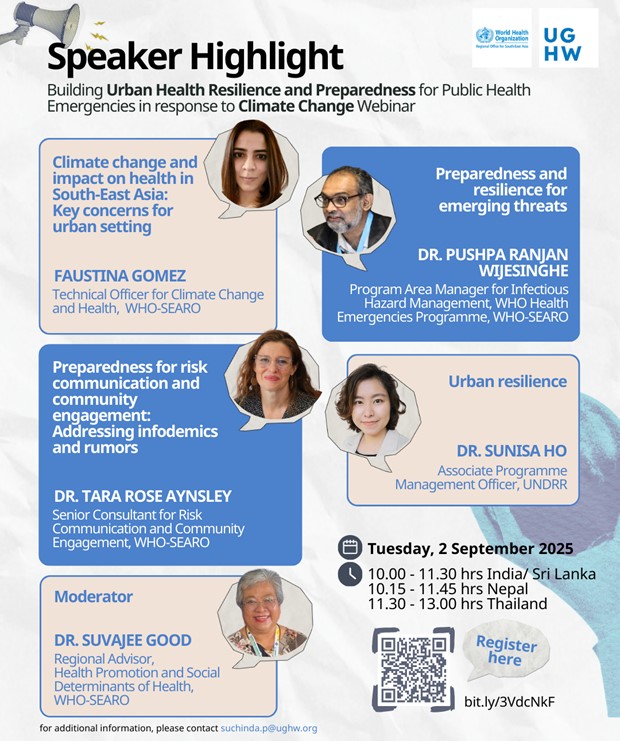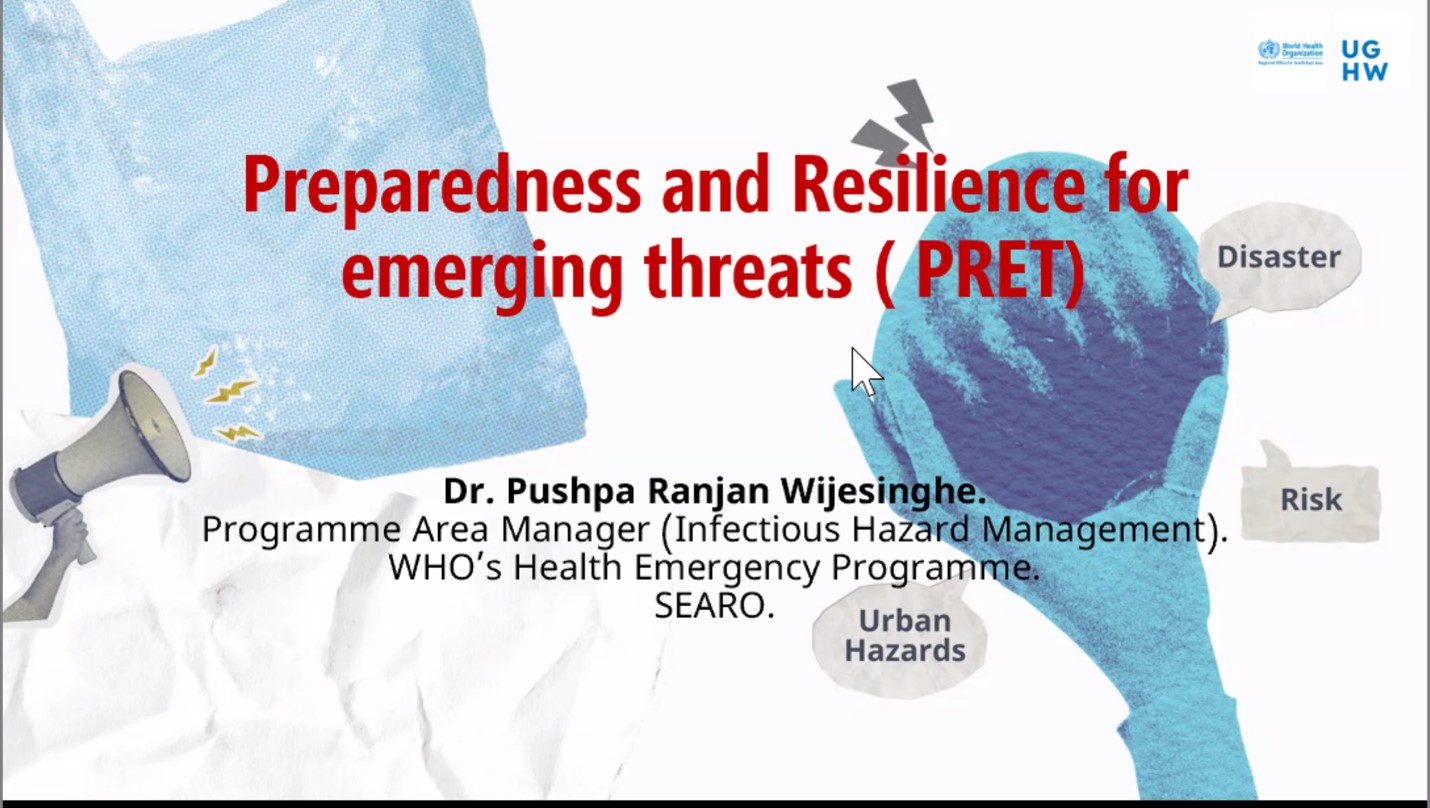The South-East Asia Regional Office of the World Health Organization (WHO-SEARO) in collaboration with the Regional Laboratory on Urban Governance for Health and Well-being (RL-UGHW) co-hosted a regional webinar titled “Building Urban Health Resilience and Preparedness for Public Health Emergencies in Response to Climate Change" on 2 September 2025. The event convened participants from across the South-East Asia Region and beyond, including representatives from local governments, city leadership, public health institutions, disaster risk management agencies, urban planning bodies, policy-making entities, and development partners. The overarching theme of the webinar focused on how climate change is reshaping urban health risks and the critical measures that cities must adopt to stay prepared, resilient, and adaptive in addressing these evolving changes.
Insights from the Panel Discussion
Moderated by Dr. Suvajee Good, Regional Advisor on Health Promotion and Social Determinants of Health at WHO-SEARO, the session opened with reflections on the interconnected challenges of climate change and public health.
- Ms. Faustina Gomez, Technical Officer on Climate Change and Health at WHO-SEARO, emphasized the urgent need to integrate climate resilience into health systems and policies, particularly in vulnerable urban settings.
- Dr. Rose Aynsley, Senior Consultant on Risk Communication and Community Engagement at WHO-SEARO, underscored the importance of trust, effective communication, and addressing misinformation in safeguarding health during crises.
- Ms. Sunisa Ho, Associate Programme Management Officer at the United Nations Office for Disaster Risk Reduction (UNDRR), shared inclusive practices from the Making Cities Resilient 2030 initiative, highlighting the role of multi-hazard early warning systems and community-driven approaches in enhancing resilience across cities in the Asia-Pacific region.

Spotlight on Preparedness and Resilience for Emerging Threats (PRET)
Dr Pushpa Ranjan Wijesinghe, Programme Area Manager for Infectious Hazard Management at WHO-SEARO, shared insights on WHO’s Preparedness and Resilience for Emerging Threats (PRET) initiative. He emphasized that emerging threats, whether biological, environmental, or social, are inherently unpredictable and often transboundary, with the potential to overwhelm fragile urban systems. Dr Wijesinghe also highlighted the heightened vulnerability of urban areas, where high population density, mobility, and social inequality converge, underscoring the need for integrated and resilient public health strategies.

Dr Pushpa Ranjan Wijesinghe explained that the PRET approach, builds on the Health Emergency Preparedness and Response (HEPR) Framework developed under the global initiative on “Strengthening the global architecture for health emergency prevention, preparedness, response and resilience” and endorsed through World Health Assembly Resolution 77.8. This framework focuses on five essential subsystems: collaborative surveillance, community protection, access to countermeasures, scalable clinical care, and emergency coordination.
These interconnected components aim to strengthen national and subnational capacities to anticipate, prepare for, and respond to a wide range of health emergencies, including those driven by climate change and urban vulnerabilities.
Dr Pushpa Ranjan Wijesinghe reminded participants that World Health Assembly Resolution 73.8 on Strengthening preparedness for health emergencies: implementation of the International Health Regulations (2005) and WHO’s operational guidance on strengthening HEPR in urban settings provides the foundation for launching the PRET approach in cities. He noted that the initiative leverages the Healthy Cities platform to support effective implementation and scaling enabling urban areas to better anticipate, prepare for, and respond to emerging health threats.
He noted that the synergies across these efforts could form the backbone of health emergency readiness in cities. He also shared case studies from Rio de Janeiro, Dhaka, and Lusaka, illustrating practical applications of responding to climate–sensitive emerging threats in urban settings. Emphasizing the importance of the PRET approach for a systematic and holistic response, he explained how PRET plans, as part of all-hazard planning tools, can help cities translate foresight into action. He concluded with a powerful reminder to think the unthinkable and plan for the future.
Moving Forward
The webinar concluded with a clear message that early preparedness saves lives and resources while protecting cities from escalating climate driven health risks. Participants emphasized that strengthening governance, securing sustainable financing, and ensuring inclusive community engagement are all critical to success.
For cities, PRET approach offers not only a technical framework, but also a roadmap to embed resilience into the core of urban governance. By adopting this approach, cities across South-East Asia Region and beyond can enhance their readiness for future crises, while safeguarding health and promoting equity in the face of climate change.
